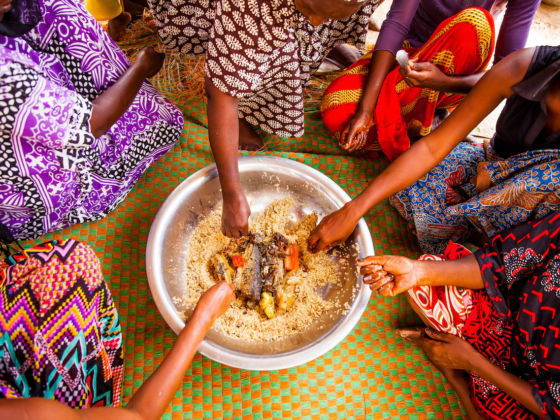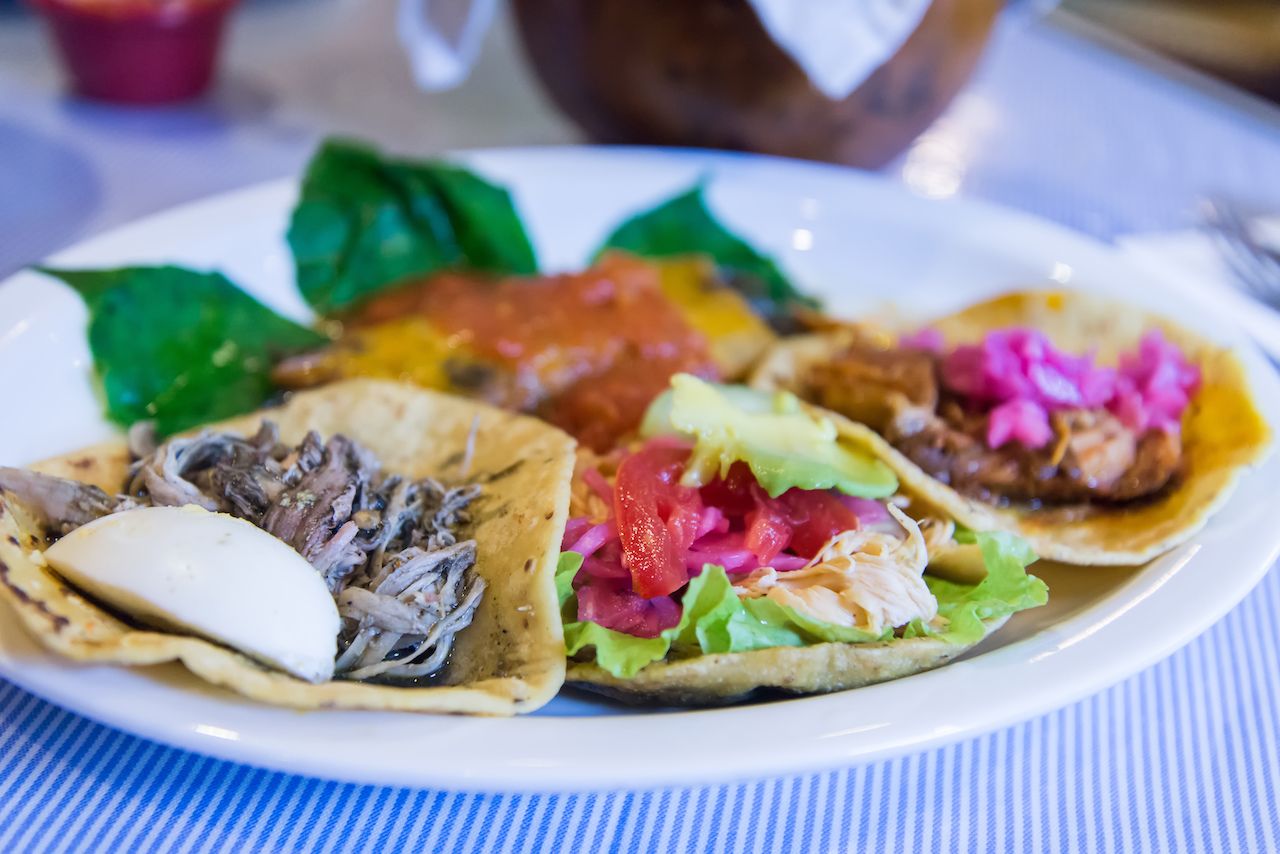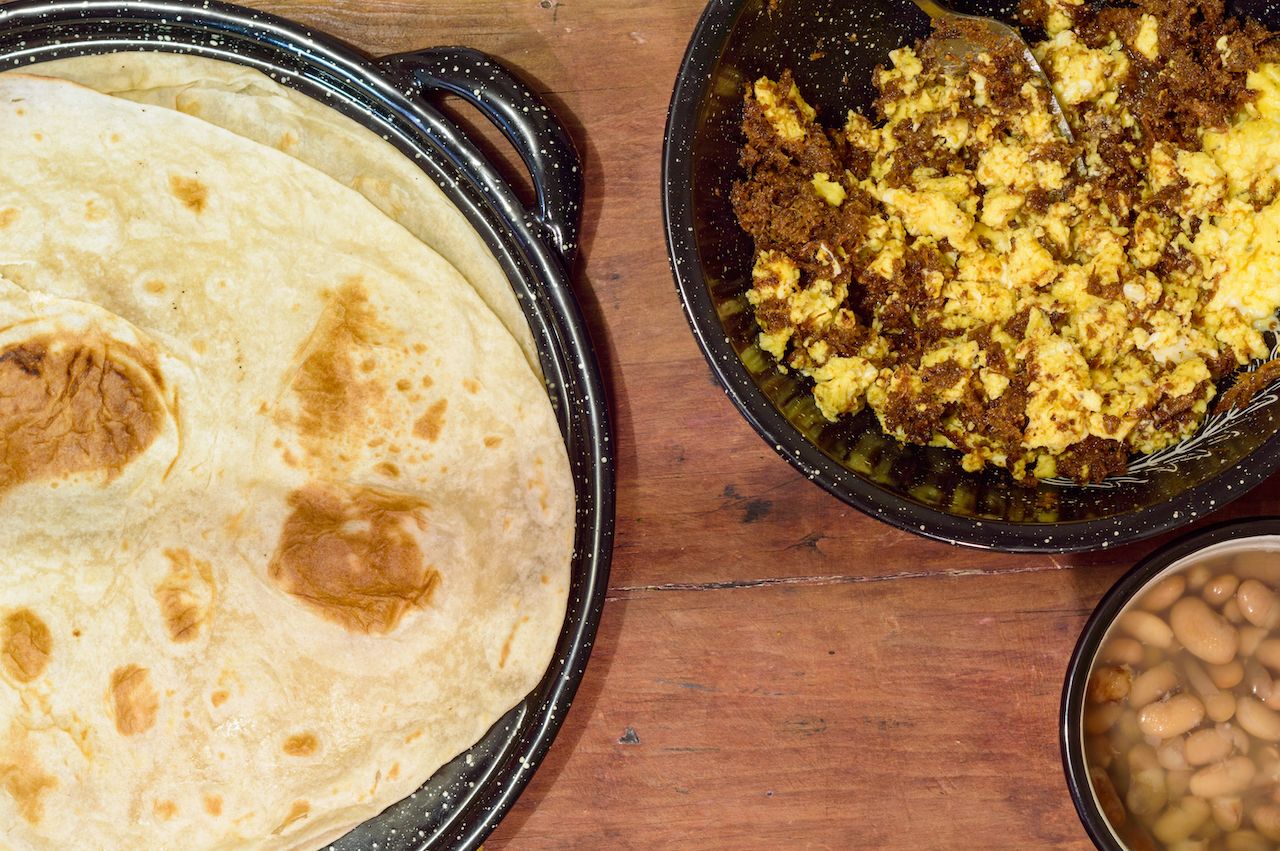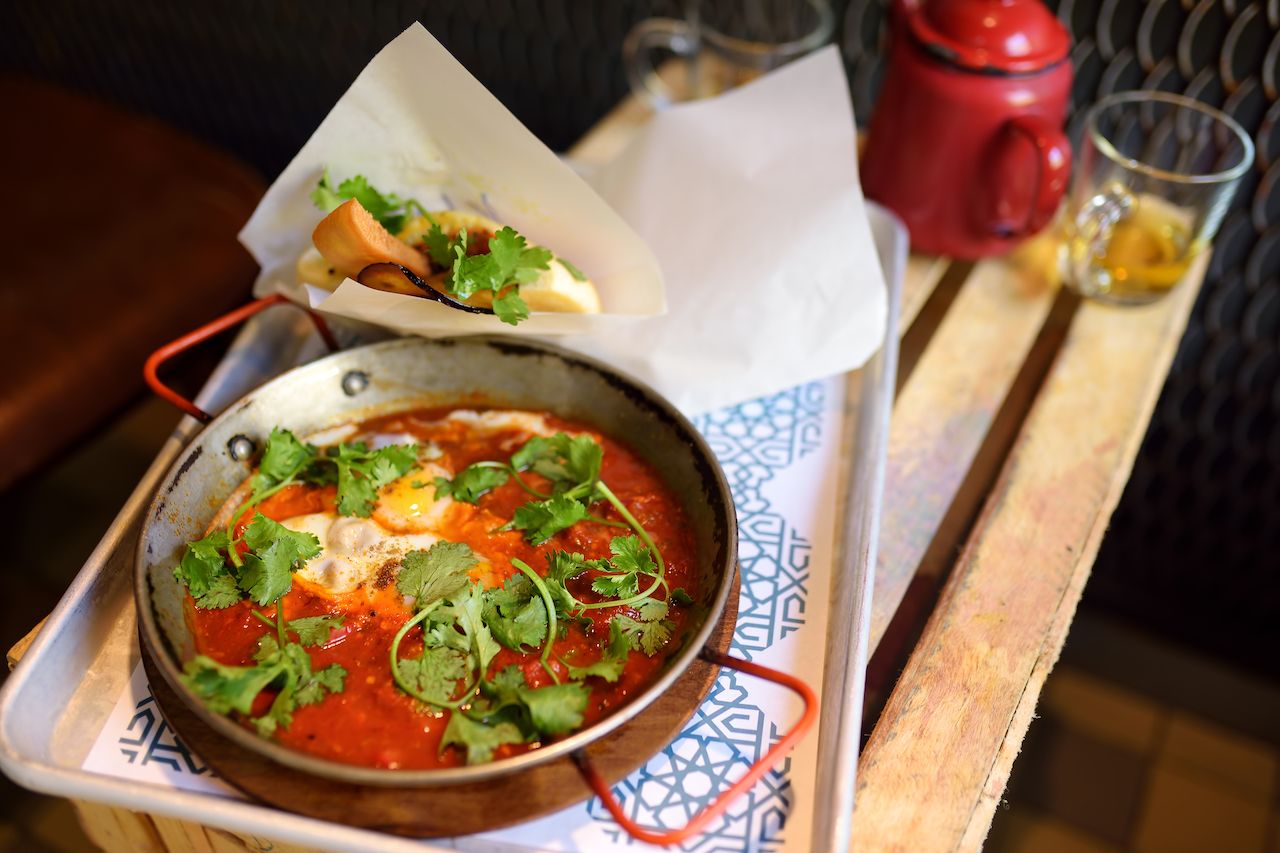For travelers who plan their vacations around eating, the best food regions are obvious: New York, Japan, Italy, and Vietnam to name a few. These are places where tacos and spicy soups sold from carts are haute cuisine, and dishes of decadent pasta live up to the hype. As timeless as these centers of fabulous food will always be, they are, undoubtedly, inundated with hungry tourists and written about with a reverence that is, frankly, a bit boring. The discerning traveler needs to expand their horizons and visit places where the food is worth celebrating even if it’s not popular among tourists.

The Most Underappreciated Food Regions in the World, According to Chefs
There are corners of the globe that are still overlooked or misunderstood when it comes to food — places that never make it onto those “best of” lists or always do for the wrong reasons. Few people know this better than chefs, the people who make it their job (literally) to keep track of places where cuisine of all types shines — even in the shadow of places like Paris.
There are the places every food fanatic should add to their bucket list, according to some intrepid chefs around the US.
1. Southeastern coast of South Korea

Photo: KYTan/Shutterstock
If you’ve had the pleasure of enjoying Korean barbecue, you probably fell in love with it. It’s all juicy, succulent grilled ribs and tender, thin slices of beef. Red meat is just the tip of the Korean cuisine iceberg, however. The southeastern coast of South Korea is much different. Here, you’ll find fresh-caught seafood still salty and damp from the ocean.
“I’m from Busan, Korea, which is on the coast, so we’re very well known for seafood. Often when people think of Korean food, they think of meat-centric dishes and Korean barbecue, but many of our traditional dishes are actually seafood,” explains chef Yeong Gon Kim of Grand Seoul in New York City’s Chinatown. “A few of the most famous fresh seafood dishes in Korea are san-nakji (live baby octopus), joetgal (salted preserved shellfish with a hint of spice), haesam (sea pineapple), and mungae (sea cucumber). These might seem exotic to other countries, but they’re actually very traditional at home.”
Kim has a point. To Western eyes, some of the food might seem out of our comfort zone (tanks filled with octopuses occupy whole stalls at the fish markets, for instance) but it’s worth trying — if only to better understand the full scope of Korean cuisine.
2. Myanmar

Photo: Phuong D. Nguyen/Shutterstock
Vietnam and Thailand are by now well-known food destinations in Southeast Asia. After all, two of the most beloved Asian dishes in America — phở and pad thai — come from these countries. It probably also didn’t hurt that Anthony Bourdain sat down with President Barack Obama in a roadside restaurant with plastic chairs to chat over bowls of spicy soup. Nearby Myanmar might not be as popular a tourist destination, but its inventive cuisine has much to recommend it.
“Burmese cuisine is influenced by bordering neighbors like India, China, and Thailand,” says Mike Morlas, chef at Chicago’s Sunda. “Dishes coming out from Myanmar are kind of a fusion from those countries. I’m intrigued and fascinated by cuisine from this region, where [they] roast spices before grinding them, which results in a more flavorful dish. Charcoal brazier is still widely used instead of stovetop cooking, which gives grilled dishes beautiful caramelization and deepens the flavors.”
It’s not just the cooking techniques. The dishes themselves inspire Morales.
“Burmese cuisine also consists of a great variety of salad, usually centered on one major ingredients like rice or noodles or fish paste and tea leaves,” he continues. “One of my favorite dishes is Burmese Tea Leaves Salad. The dish fuses flavors and textures like soft, fermented tea leaves with crunchy beans and fried garlic. Consuming tea leaves is so specific to Burmese cuisine, and it’s so delicious and healthy for you.”
Morales says one must-try Burmese ingredient is besan, ground yellow split peas or chickpeas. “Burmese tofu is made with besan, which is non-soy and not related to the Chinese-style tofu that we know. It’s usually consumed fresh in salad or fried like a fritter.”
3. Ohio

Photo: Schmidt’s Sausage Haus/Facebook
New York City and Los Angeles get the most credit for being the United States’ great food cities, but to dismiss the Midwest would be to miss out on a thriving restaurant scene. Take Ohio, which Andrew Holmes, food and beverage director at First Hospitality Group, praises for being diverse and more adventurous than you might expect.
“This Midwestern state truly is a cross-section of the entire USA,” Holmes says. “Our location gives us such an eclectic culture, which in turn produces a fascinating and diverse food personality. [Columbus] has so many great pocket villages around it with the food scene to support it. Whether it’s Victorian Village for the best tacos — Junior’s Tacos — to Schmidt’s Sausage Haus in German Village. The place is an institution. There’s only one order when you go: their house-made sausages.”
4. North Carolina

Photo: Highland Avenue/Facebook
The South is finally getting the recognition it deserves for food that has long been sublime, even before the rest of the country “discovered” it. Charleston in South Carolina, which chef Ryan McCaskey of Chicago’s Acadia calls “exciting and energetic,” is having a moment that never seems to end. The city has spots that tourists seem magnetized to, from Sean Brock’s Husk to The Ordinary.
However, chef Bill Greene of the Charlotte, North Carolina, restaurant Peppervine thinks it’s time for western North Carolina to stop living in Charleston’s shadow.
“The juxtaposition of local ingredients with global influences, such as the use of North Carolina seafood and worldly flavors, is a huge part of the food culture here,” explains Green. “Southern staples like pimento cheese take new forms like pimento cheese scones or pimento cheese focaccia — not your typical cheese spread and saltines. Restaurants in this area are also building impressive wine lists, challenging the conceptions of what you can find here.”
Green recommends visiting small cities like Hickory, where restaurants like Cafe Rule and Highland Avenue “showcase true contemporary Carolina cuisine.”
5. Senegal

Photo: Shadow design/Shutterstock
Unfortunately, many Westerners don’t know much about African cuisine, except for perhaps Ethiopian food. However, one chef thinks the aromatic flavors of Senegalese food — which incorporates rich, earthy ingredients like garlic, peanuts, lamb, and lentils — is overdue for the spotlight.
“Senegal has a rich food culture that blends African and French cooking,” says Kristen Thibeault, executive chef at the catering company Nybll. “One of my favorite meals is yassa poulet with turmeric fonio pilaf. It’s a bold dish that marries grill lemon habanero chicken thighs with a tart sauce of caramelized onions, green olives, and dijon mustard.”
Beyond Senegal, Thibeault shows her appreciation for a staple ingredient common throughout Africa: fonio, a high-protein grain similar to quinoa or couscous. She uses fonio to create her own Senegal-inspired dishes at home.
“Fonia is one of the best-kept secrets of the African continent,” she adds. “Its nutty flavor is incredibly versatile and works perfectly with most proteins. With the yassa, I like to do a bright yellow turmeric pilaf that includes roasted sweet potatoes, ginger, black-eyed peas, and minced dates.”
6. Rural Louisiana

Photo: Cajun Claws Seafood Boilers/Facebook
By now, New Orleans is well established as one of the food capitals of the world, but Cajun food has deep roots throughout the state that are worth exploring.
“Louisiana Cajun country is one of the best places to eat in the world,” says chef Alon Shaya, who opened New Orleans restaurant Saba last year. Shaya recommends traveling beyond that iconic city to experience the full scope of cajun flavors. “While most people come to New Orleans expecting to get a taste of the real Cajun experience, it’s just not the same.”
Part of that real taste means not sticking to restaurants.
“You have to head out towards Lafayette and stop in Krotz Springs. Pull up to Kartchner’s grocery store for fried boudin balls, smoked boudin, head cheese, and cracklings,” he says. “Eat that with mustard and saltines in the parking lot on the hood of your car. The heat from the engine will warm the head cheese just right.”
Shaya also recommends dinner at Prejean’s in Carencro, Louisiana, for chicken and andouille gumbo with potato salad. And, Shaya emphasizes, if you’re in Louisiana, sampling the seafood must be high up on your to-do list.
“Drive down to Abbeville and stop into Shucks restaurant for the best fried shrimp, oyster stew, and bread pudding with whiskey sauce you’ll ever have,” he advises. “If you’re there in the spring, during crawfish season, a stop at Cajun Claws in Breaux Bridge is mandatory for their succulent and addictive boiled crawfish.”
7. Eugene, Oregon

Photo: Marché/Facebook
Oregon is most widely known for Portland, stereotyped as the land of hipsters and endless coffee shops. But if you’re in the market for locally sourced, fresh ingredients, Oregon has so much more to offer — namely in Eugene. Yes, the city has more to love than those yellow and green Ducks.
“Eugene is a hidden gem for ingredient-driven cuisine,” says chef Rocky Maselli of Marché. “We have the perfect combination of climate, fertile soil, a thriving wine industry, and proximity to the ocean — a cuisine has developed here that is distinct to our place in the world. Our local ingredients — Chinook salmon, Dungeness crab, every wild mushroom that you can imagine (including white and black truffles) — inspire me and other local chefs to cook seasonally and locally. Every season brings something new — it really doesn’t matter what time of year you visit, there is always something to celebrate and enjoy in the southern Willamette Valley.”
8. Mexico’s Pacific coast and northern states

Photo: Esdelval/Shutterstock
There’s no doubt that Mexican cuisine is among the most popular and appreciated on the planet. But to truly understand the depth of this country’s food culture, you must look beyond red-meat-filled tacos. Several chefs I spoke with heaped praise upon regions in Mexico they’ve noticed are still going unexplored by culinary adventurers. The seafood offerings in particular stand out.
“Located on Mexico’s beautiful Pacific coast, Zihuatanejo is known for its rich history as a fishing village and its abundance of native produce,” Miguel Baltazar, executive chef at the Thompson Zihuatanejo hotel, says. In particular, he mentions a type of regional mango called ataulfo and chocolate habaneros.
On the coast, you’ll find towns with mercados where you can pick your fresh-caught fish and have it prepared in front of you two counters over. Or head to enramadas, local seafood restaurants that make seasonal dishes with recipes passed down through generations.

Photo: Robert Briggs/Shutterstock
The northern region of Mexico is worth exploring too, where wheat, not corn, is the primary crop. That means a focus on the underappreciated flour tortilla. This seemingly small deviation in agriculture has big consequences for the cuisine.
“I recently visited Hermosillo in the northern state of Sonora, Mexico, and was astounded by the cuisine,” gushes Mary Sue Milliken, chef and owner alongside Susan Feniger, at Border Grill in Los Angeles. “They grow fantastic wheat and make the thinnest, tenderest, largest tortillas imaginable. They are immediately filled with delicious soupy beans and stews of beef, pork, chicken, cabesa, or lengua and rolled into petite burritos — irresistible. Also impressive were the brown-sugar-filled coyotas made of flaky pastry and baked in a wood burning oven.”
Feniger has her own beloved region of Mexico, called Merida. Though she visited for the first time many years ago, she can still recall the exquisite fresh seafood served at a street-side taco stand that made her fall in love with the city.
“Merida is a hidden gem for great quality Yucatan dishes. I remember when Mary Sue and I visited Merida in 1983, we were standing outside and we were drawn to this man with a little station displaying fresh lobster, shrimp, and salmon,” she says. “He made us chilled fresh fish tacos in a tiny tortilla held in his hand and topped it off with peas, aioli, radish, olive oil, and a splash of naranja agria. He handed us two little tacos and two beers, and I can still taste it!”
Feniger recommends eating botanas-style for the “ultimate local experience,” which might remind some visitors of eating tapas in Spain.
“Botanas literally translates to ‘snacks’ in English” she says. “You order a round of drinks and delicious and traditional small dishes are served — it’s a great way to try a variety of plates, but you have to love drinking and loud places.”
Still unsatisfied by this mini-tour of Mexico’s most underappreciated cuisine? Let chef Pati Jinich take you to Sinaloa, where she recently visited while filming a documentary for PBS called Pati’s Mexican Table. There, she discovered — you guessed it — more impeccably prepared seafood.
“As I explored Sinaloa from tip to tip, I realized that not only is it home to extraordinary ingredients, with river water flowing through mineral-rich soil ending in sea water, making for really fabulous produce and seafood, but also to a cuisine largely unexplored by outsiders,” Jinich explains. “People abroad don’t know much of Sinaloan cuisine, except for maybe its iconic chilorio [a spicy pork dish] or machaca [dried and spiced beef or pork that’s re-hydrated before serving]. Slowly but surely more of its dishes are starting to be known, like aguachile, pescado zarandeado, and some of its unique ingredients, like the chiltepin.”
9. Idaho

Photo: CSNafzger/Shutterstock
Idaho doesn’t get a fair shake. Most people think of it as hot, dry, surrounded by desert mountains that can’t possibly support interesting ingredients. They skip right over it and head to Washington if they’re in the mood for a culinary treasure hunt. That would be a mistake, as it turns out.
“Everyone thinks potatoes when they think of Idaho, but we have the largest Basque population in the US,” says chef Richard Langston, owner of Richard’s in Boise. “One of my favorite restaurants — and a great late-night spot for cooks — is Bar Gernika, a Basque pub with solomo sandwiches, lamb kebabs, and beef tongue, local beer and Old World wines. I always start with an order of croquetas and pour on the Tiger Sauce. I also watch for paella night at the Basque Market where they cook in their huge skillet right out on the sidewalk.”
Neighboring Washington gets all the credit for having the best seafood, yet Idaho has a few fish of its own worthy of consideration.
“We have great fish here in Idaho: golden trout, steelhead trout, and sockeye salmon with some very sustainable farming, as well as wild caught choices,” says Phil Winchester, chef de cuisine at The Limelight Hotel Ketchum in Sun Valley. Winchester praises Idaho for the quality of ingredients farmed in the state.
“Idaho also is home to some of the best beef in the country,” he says. “Snake River Farms is world-famous for their wagyu and just a couple of hours away from Ketchum, and I haven’t tasted a better grass-fed lamb than what I get from Lava Lake Lamb. Elkhorn Ranch South is where I get my pork from; their pigs are pasture-raised, purebred heritage Berkshire and Large Black hogs.”
10. Iran

Photo: Shahram Jafari Studio/Shutterstock
It’s time the Middle East got its due. Ancient culinary traditions come to life in this region, infused with rich spices and fragrant ingredients like pistachios. One of the most palette-stirring countries is Iran, a destination almost always overlooked by travelers.
“Persian cuisine is completely underrated. We have limited understanding of this [cuisine] in comparison with Greek or Indian food,” says Nelly Buleje, executive chef at the Grand Geneva Resort & Spa in Lake Geneva, Wisconsin. “As a fan of Mediterranean food, I’m on a mission to introduce foods like falafel to the Midwest. Jeweled rice dotted with brightly colored dried fruits and nuts is delicious. Pistachios, almonds, carrots, and saffron in the rice dish goes great with a chicken kabob called jooje, topped with a refreshing cucumber and herb yogurt sauce called mast-o khiar.”
11. Israel

Photo: Maria Sbytova/Shutterstock
Iran isn’t the only Middle Eastern country with cuisine you need to be paying attention to. Jason Hanin, executive chef at The Ebbitt Room in Cape May, New Jersey, sees the influence of Israeli ingredients catching on in the United States.
“Israel is a melting pot of so many cooking styles — eastern European, North African, Iranian, Palestinian, Lebanese, and so many other cultures that date back over 2,000 years,” he says. He calls out spice blends like ras el hanout, za’atar, and dukkah, as well as ingredients like cauliflower and eggplant. “What also makes it so special is the quality of ingredients. And the rustic, yet elegant, simplicity of the food.”